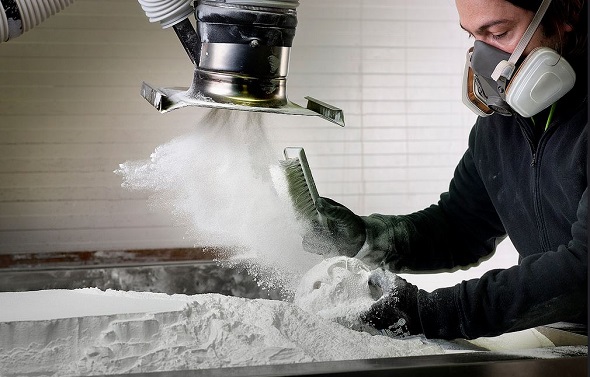UL, a global safety consulting and certification firm based in Illinois, has published the “Standard Method for Testing and Assessing Particle and Chemical Emissions from 3D Printers.” The first edition of this document, ANSI/CAN/UL 2904, is to be used by stakeholders seeking to mitigate indoor air pollution risks from 3D printer emissions.
“ANSI/CAN/UL 2904 will advance the availability of low emission printers and print media for use in the global marketplace,” said Philip Piqueira, Vice President of Standards for UL.
“UL is proud to offer its first safety Standard addressing chemical pollution and reducing its impact on human health.”

A new standard for 3D printer emissions
Last year, UL Chemical Safety and Georgia Institute of Technology (Georgia Tech) completed a two-year research study on 3D printers and emissions. According to the research, several desktop 3D printers are prone to generate ultrafine particles (UFPs) while in operation. These particles are detrimental to a person’s health as they can be inhaled and penetrate deep into the human pulmonary system.
The study also found that more than 200 different volatile organic compounds (VOCs), many of which are identified as irritants and carcinogens, are emitted from 3D printers.
According to Dr. Marilyn Black, VP and Senior Technical Advisor for UL, “The new Standard allows manufacturers and users of 3D printers to have the assurance that printers have been tested and shown to meet low emission criteria for small particles and volatile chemicals that can affect human health.”

Safe 3D printing
The UL and Georgia Tech team aimed to bring more information to 3D printer users so that they may choose safer options for 3D printing. Throughout their research, the team deduced that 3D printer nozzle temperature, filament type and color, as well as 3D printer brand, affect emissions. They also found that extrusion temperature, filament material, and filament brand significantly impacted emission levels.
Last month, UL launched a Blue Card, also known as the Plastics for Additive Manufacturing Program, to help materials manufacturers reach their potential customers.
The company also recently announced that defense company Lockheed Martin is the first to achieve its UL 3400 certification, which is used to certify operations handling both polymer and metal powdered feedstock for additive manufacturing.
UL Chemical Safety and Georgia Tech have condensed their two-year research in four scientific reports on 3D printers and emissions. Two of the research papers, “Characterization of particle emissions from consumer fused deposition modeling 3D printers” and “Investigating particle emissions and aerosol dynamics from a consumer fused deposition modeling 3D printer with a lognormal moment aerosol model,” are published in Aerosol Science and Technology.

Nominations for 3D Printing Industry Awards 2019 are still open. Let us know the enterprises, technology, and individuals leading the additive manufacturing sector.
Want the latest 3D printing news? Subscribe to the 3D Printing Industry newsletter, follow us on Twitter and like us on Facebook.
Also, visit 3D Printing Jobs to commence your career in additive manufacturing.
Featured image powder handling, an area of health and safety to recieve guidelines from UL. Photo by Arthur Los, Milo-Profi studio. Copyright by Flanders Investment & Trade via imaterialise.

